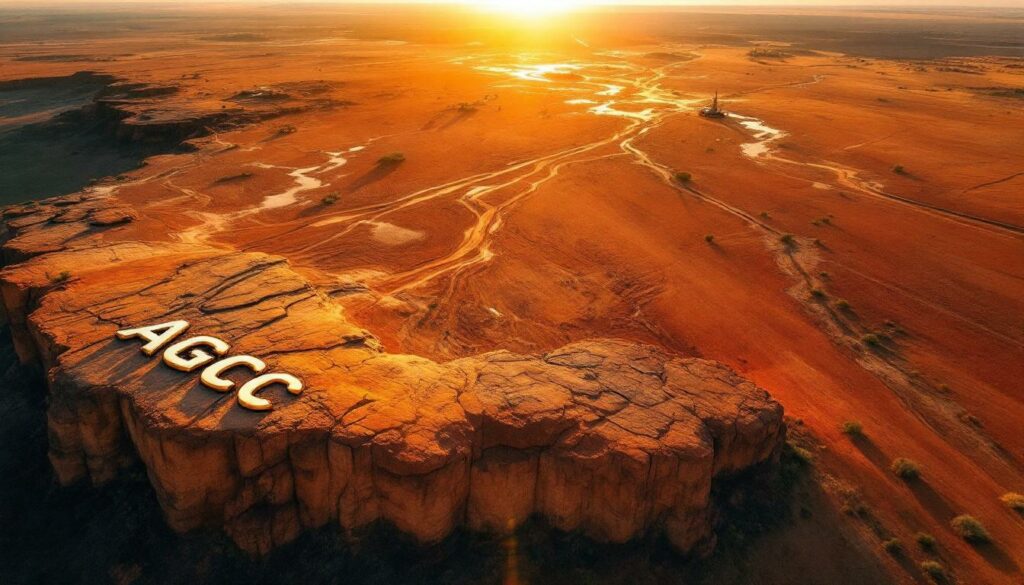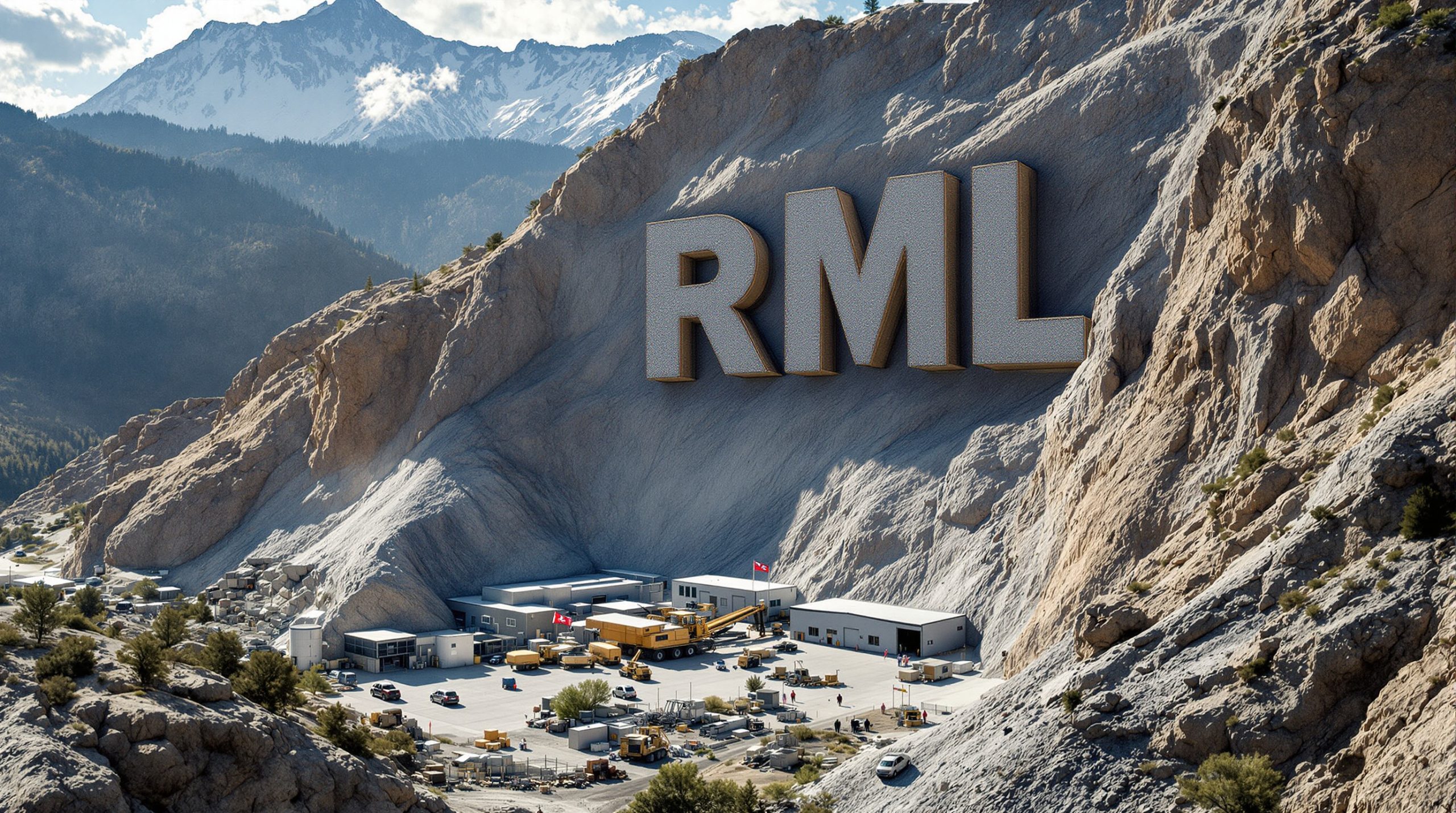Multi-Kilometre Gold-Silver Trend Emerges at AGC's South Cobar Project
Australian Gold and Copper (ASX: AGC) has unveiled a regionally significant gold-silver trend at its South Cobar Project in NSW, with aircore drilling highlighting a mineralised system extending over four kilometres – dramatically expanding the footprint of the promising Achilles discovery.
Extensive Mineralised System Defined Across 4km Strike
AGC's recently completed aircore drilling program—the largest ever conducted in the South Cobar district—has successfully mapped a mineralised system considerably larger than previously identified. The 312-hole (11,137 metre) program has defined two significant target zones:
- Target 1: A 1.2-kilometre southern extension of the Achilles trend
- Target 2: A newly identified 2.0-kilometre gold-silver trend yet to be tested by deeper drilling
These results effectively expand the Achilles system from its previously drilled 650-metre strike length to a potential mineralised corridor extending over 4 kilometres.
"These results carry regional significance and confirm that the Achilles discovery is set to grow. The scale of gold, silver, and base-metal anomalism identified in this aircore campaign is remarkable," stated Managing Director Glen Diemar.
RC Drilling Now Testing Southern Extension
The company has already mobilised a reverse circulation (RC) drill rig to begin testing the newly defined Target 1, with the first holes collared approximately 500 metres south of the known Achilles deposit.
Notably, aircore hole A3AC036 returned 9 metres at 0.22 g/t gold and 6 g/t silver from 45 metres within this southern extension, comparable to the anomalous values that initially led to the Achilles discovery.
"Our approach is straightforward: drill beneath the strongest and shallowest anomalies and work systematically along the 4km trend," said Diemar. "A successful intersection has the potential to extend the Achilles deposit to over 1.2km."
Understanding Aircore Drilling in Mineral Exploration
Aircore drilling is a cost-effective exploration technique used to sample the weathered bedrock beneath surface cover. Unlike resource-definition drilling methods like diamond or RC drilling, aircore is primarily used to identify geochemical trends and vectors that point toward potential mineralisation at depth.
The technique involves drilling vertical holes through transported cover to sample the weathered in-situ material above fresh bedrock. In AGC's program, holes averaged 35 metres in depth, with the deepest reaching 90 metres.
How Aircore Drilling Works
Aircore drilling utilises compressed air to drive a blade bit that cuts through soft material. The drilling method includes:
- Vertical drilling through surface materials
- Sample collection via compressed air that forces cuttings up the drill rods
- Weathered bedrock sampling to identify geochemical signatures
- Shallow depth capability typically limited to the base of weathering or soft rock
The primary advantages of aircore drilling include:
| Advantage | Description |
|---|---|
| Cost-effectiveness | Significantly cheaper than diamond or RC drilling |
| Speed | Can complete many holes quickly for broad coverage |
| Minimal surface disturbance | Smaller footprint than larger drilling methods |
| Effective for geochemistry | Provides representative samples for multi-element analysis |
The geochemical footprints identified in aircore drilling—including pathfinder elements like antimony, arsenic, and bismuth—can provide crucial clues about the location, size, and orientation of mineralised systems that may exist in the fresh rock below.
Multiple Pathfinder Element Trends Enhance Targeting
The aircore program has defined coherent multi-element geochemical trends that significantly enhance the company's understanding of the mineralised system. Key findings include:
- Target 1: Consistent trends of silver, gold, lead, zinc, copper, antimony, arsenic, and bismuth extending 1.2km south of Achilles
- Target 2: A 2.0km gold-silver anomaly with associated pathfinder elements suggesting potential deeper mineralisation
- Additional targets: Including a copper-zinc target coinciding with a bullseye IP chargeability anomaly, and a western copper-bismuth trend
Importantly, the program has successfully mapped the host lithologies associated with mineralisation at Achilles over 5 kilometres of strike, which remain open to both north and south.
Comprehensive Exploration Approach
AGC's exploration strategy combines multiple techniques to build a robust targeting model:
- Geochemical sampling: Aircore drilling to define metal trends in weathered bedrock
- Geophysics: IP surveys to identify chargeable bodies potentially representing sulphide mineralisation
- Lithological mapping: Petrology and lithogeochemical studies to identify key host rocks
- Structural analysis: Identification of structural controls like the Achilles Shear Zone
This integrated approach has enabled the company to develop a comprehensive understanding of the mineralised system and generate multiple high-priority drill targets.
"We're now seeing the broader geological district around Achilles take shape. The scale of gold, silver, and base-metal anomalism identified in this aircore campaign is remarkable. Achilles itself has been drilled over a 650m strike, and these new results suggest mineralisation-associated anomalism extends for more than four kilometres – the kind of dataset geologists dream of," Diemar explained.
Detailed Target Analysis
Target 1 – Achilles Au-Ag Trend
A consistent and coherent trend of silver, gold, lead, zinc, copper, antimony, arsenic, and bismuth has been defined south of the known Achilles mineralisation. This multi-element anomaly extends for 1.2 km and remains open, with the strongest results recorded approximately 400 m south of Achilles.
The geological setting appears similar to the main Achilles discovery, with the anomalism occurring in weathered bedrock above an interpreted extension of the mineralised system. The current RC drilling program is targeting this area, with initial holes positioned to test beneath the strongest geochemical responses.
Target 2 – New 2.0 km Gold-Silver Trend
A substantial anomaly has been identified in the southern portion of the aircore drilling area. This target exhibits multi-element anomalism, including lead, zinc, copper, molybdenum, and antimony, and presents key characteristics indicative of a large-scale mineralised system.
While the anomaly is broader than that observed at Achilles, the lower-order antimony response and wider dispersion suggest the mineralisation may be deeper. AGC's exploration team considers this an attractive drill target for future programs.
Additional Exploration Opportunities
Between the two major gold-silver targets lies an interpreted structural jog within the Achilles Shear, where a northwest-trending structure intersects the main shear zone. Geochemical results from aircore drilling in this area reveal copper and zinc anomalism coinciding with a bullseye IP chargeability anomaly and magnetic mafic dykes.
This setting represents an attractive target for Achilles-style or other types of mineralisation and adds to the project's exploration potential.
Investment Thesis: Why AGC Warrants Attention
Australian Gold and Copper presents a compelling investment case for several reasons:
- Scale potential: The 4+ kilometre mineralised trend suggests the potential for a significant resource base
- Early-stage opportunity: With only 650 metres of the Achilles system tested by deeper drilling to date, the company offers substantial exploration upside
- Regional significance: The scale of anomalism identified in the South Cobar district points to a potentially major mineralised system
- Systematic approach: AGC's methodical exploration strategy reduces risk and maximises discovery potential
- Active drilling program: With RC drilling already underway, investors can expect regular news flow
The systematic expansion of the Achilles mineralised footprint demonstrates AGC's ability to effectively explore and grow its resource potential in the Cobar Basin, a region known for its significant gold and base metal deposits.
With multiple drill-ready targets now defined across a 4+ kilometre strike length, the Australian gold and copper in South Cobar project is well-positioned to potentially deliver substantial growth in the scale of its Achilles discovery.
Want to Be Part of AGC's Expanding South Cobar Discovery?
For investors looking to capitalise on Australian Gold and Copper's (ASX: AGC) promising multi-kilometre gold-silver trend at the South Cobar Project, now is the time to learn more. With RC drilling already underway targeting the newly identified 4km mineralised corridor, significant news flow is anticipated. Visit AGC's Twitter/X page for the latest updates and to follow their systematic exploration approach as they work to unlock the full potential of this regionally significant discovery.




